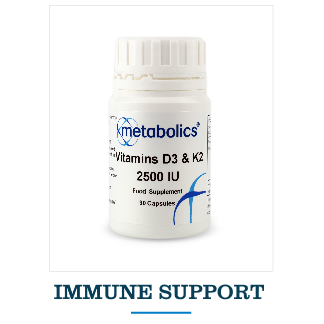What is Alzheimer’s Disease?
Alzheimer’s disease is a progressive degeneration of the nervous system where the death of brain cells over time causes memory loss and cognitive decline (dementia).
There are 2 common forms of dementia, Alzheimer’s disease which according to the Alzheimer’s society accounts for 60-80% cases of dementia and vascular dementia which is caused by stroke.
Alzheimer’s like any dementia is the result of brain cell death where there are progressively fewer nerve cells (neurons) and connections (synapses) and the total brain size shrinks.
Brain tissue in an Alzheimer’s brain shows microscopic ‘plaques’ from a build up of protein called beta-amyloid, between the dying brain cells. The beta amyloid elicits a neuroinflammatory response via activation of microgia and astrocytes. There are also tangles within the brain neurons. These tangles are from another protein that disintegrates called Tau. Although these plaques and tangles are always present in Alzheimer’s brain tissue as yet it is uncertain whether there are other processes involved causing the memory loss.
On 21st January 2014, the International journal of neurology Hippocampus published an article by Manel Esteller, Director of Epigenetics and Cancer Biology demonstrating the existence of an epigenetic lesion in the hippocampus of the brain of patients with Alzheimer's. The study observed that the dusp22 gene switches off (methylates) as the disease advances. The gene appears to regulate tau protein, postulating that the accumulation of tau protein in the Alzheimer’s brain results from the inactivation or switching off of the dusp22 gene.
Alzheimer’s facts
- Age- more prevalent in 65 years + and greater still in 85 years+
- Family History
- Gender -more women are affected than men
- Genetics – Certain inherited genes such as APOE (Apo lipoprotein E) are associated with a higher incidence of Alzheimer's and early onset Alzheimer’s ( age 30-60) are genetically inherited. It has been reported that a single APO E allele presence is associated with a 2-4x risk of Alzheimer’s and the presence of a double APO E allele is associated with a 4-8x risk. So far 21 Genes have been associated with Alzheimer’s disease
- Disease resulting in decreased vascular blood flow to the brain such as atherosclerosis, high cholesterol, diabetes may potentiate Alzheimer’s
- Previous head trauma may predispose to Alzheimer’s
- Women who have undergone hormone replacement therapy may have an increased risk of Alzheimer’s
- Also associated with lower educational attainment
Symptoms of Alzheimers Disease
- Increasing difficulty remembering things, especially short term memory
- Becomes more difficult to make decisions
- Phobias or anxieties, depression anger or agitation may develop
- Repetitive seemingly pointless behaviour
- Restlessness and sleeplessness at night
- Unsteadiness on the feet
- Difficulty performing simple functions such as washing and dressing
The Alzheimer’s association has published 7 stages of decline online which can be viewed by clicking the link.
Current thinking suggesting that beta amyloid protein deposits or possibly metal deposits such as Aluminium or mercury (beta amyloid has a high affinity for these metals) may result in developing the symptoms of Alzheimer’s disease. 21 genes have been pinpointed in research that may put people at a higher risk of developing the disease.
Also Epigenetic factorsinvolving environmental influences that may have turned genes or off allowing the detrimental changes that result in dementia to occur. There has been an alarming rise in Alzheimer’s disease in recent years and it is possible that toxicity and consequent epigenetic changes will result in Alzheimer’s appearing in younger, middle aged age groups as well as the elderly.
Oxidative Stress and Alzheimer’s
There is increasing evidence that oxidative stress including protein, lipid, glycation and DNA oxidation is closely associated with the development of Alzheimer’s Disease. (Involvement of oxidative stress in Alzheimer disease by Nunomura, Castellani, Zhu, Moreira, Perry, Smith published in J Neuropathol Exp Neurol 2006.
Both the loss of neurones and the accumulation of beta amyloid plaques, tau protein accumulation in the brain and the proliferation of astrocytes are also associated with AD. Oxidative stress results when there are greater numbers of ROS (Reactive Oxygen Species) than there are antioxidants to mop them up. There are many forms of reactive oxygen species including amongst others superoxides, hydrogen peroxide, hydroxyl radicals, and singlet oxygen.
Some antioxidants are able to detoxify these to oxygen and water. Increased levels of oxidised molecules have been found in Cerebrospinal fluid, blood and urine of AD sufferers, along with decreased antioxidant levels.
Lipid Peroxidation: Beta amyloid protein causes lipid peroxidation and increases the cellular debris associated with this.
(Oxidative Stress hypothesis in Alzheimer’s disease by Markesbery, published FreeRadic Bio; Med 1997) DNA Oxidation: DNA is particularly susceptible to oxidative damage.
(Oxidative damage is the earliest event in Alzheimer disease by Nunomura, Perry et al and published in J Neuropathol Exp Neurol 2001 Aug).These researchers found that ROS (reactive oxygen species) induce an influx of calcium ions through the glutamate receptors, resulting in excitotoxicity and cell death. Oxidative cell damage is responsible for DNA strand breaks Mitochondrial dysfunction- consistent defects in mitochondrial function and defective electron transport chains have been observed in AD patients.
Protein oxidation and Glycoxidation have also been found to be present in AD.



